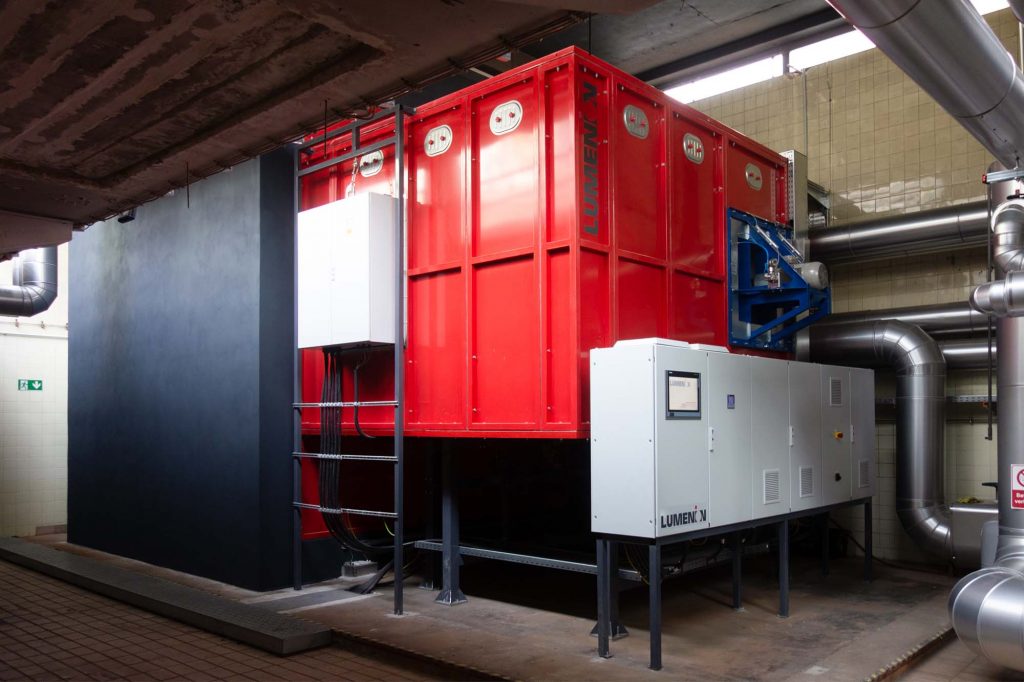Everybody talks about renewable energy, but no one talks about renewable heat. LUMENION wants to change that. LUMENION GmbH was founded in Berlin in 2015. The company develops high temperature steel storage systems that integrate regional wind and solar energy peaks into heating and electricity grids.
The challenge with renewable energy sources such as solar and wind is that their availability fluctuates heavily. That is why energy system transformation requires different storage technologies. Storage systems are the central sector coupling element.
Interview with Hanno Balzer, Managing Director of Lumenion.
Easy Engineering: What are the main areas of activity of the company?
Hanno Balzer: LUMENION’s high-temperature steel storage systems are particularly suitable as storage system when large amounts of wind and solar energy need to be integrated into local electricity and heating networks in a decentralised, grid-compatible and cost-effective manner. They can also provide continuous CO2-free process heat. This makes them an enabler for an efficient CO2-free energy supply and heat utilisation.
The users and beneficiaries of these storage solutions are industrial companies with high process heat requirements, municipalities with local or district heating networks, developers and operators of large wind and PV plants, and companies in structural change areas that are actively seeking solutions and prospects for successful economic development even during the coal phase-out process.
E.E: What’s the news for 2020 about LUMENION and its products?
H.B: In 2018 the construction of the first storage prototype began on the premises of the Berlin University of Applied Sciences (HTW). Since the beginning of 2019, this demonstrator with a 450 kWh storage capacity has been able to demonstrate the functionality of the technology and optimise the operational management.
In May 2020, a 2.4-MWh storage facility in Berlin-Reinickendorf was commissioned together with Vattenfall Energy Solutions and Gewobag (a municipal housing company in Berlin). There, the storage unit improves the CO2 balance of the local heating supply of 1,800 residential units and demonstrates the special technical and economic suitability of high-temperature storage units for the effective use of large amounts of wind and electricity energy.
With the construction and operation of both projects, LUMENION has successfully brought steel storage technology to market maturity.

E.E: At what stage is the market where you are currently active?
H.B: Our team members are quite experienced when it comes to storage solutions and have been integrating renewables into the energy system for over 30 years – starting with the very first PV systems in the 1980s.
When we (in a predecessor company) started thinking about storage in 2005, it soon became clear that batteries would become very important to stabilise the power grid in the short term. But also that – even with a huge drop in prices – they will never be cheap enough to “push” really large amounts of energy.
We therefore specifically searched for an extremely cheap and effective storage medium – and found steel.
Thermal storage is already cheaper i.e. by a factor of 10 – although it is not yet produced in large quantities. A further advantage is that all the components required for the steel storage system from LUMENION – i.e. steel, insulation, turbines etc. – are already industrially standardised, proven and widely available. The service life of steel is at least 40 years, the operating costs are low and the steel still represents a value of about 40 percent of the investment sum. In addition, the steel can be recycled after use, so that, unlike batteries, there are no challenges in the use of raw materials or recycling.
The LUMENION steel storage technology makes its users ready for the energy turnaround – the regulatory framework is not yet in place in some areas. A key point here is the abolition of levies and grid charges on renewable electricity, which are still incurred today even when surplus energy quantities are stored for grid use at 0 cents per kWh. Even with 100 percent efficiency, the thermally used kWh costs 15 cents. Here, the legislator is called upon to adapt the regulation accordingly. The signals in this context are encouraging: more and more political decision-makers see the need for action and want to make the legal framework for innovative storage technologies ready for the energy turnaround.
E.E: What can you tell us about market trends?
H.B: Even if the focus in the debate on energy system transformation in Germany is often placed on the electricity sector, our commitments under the Paris Climate Change Agreement make it clear that we must reduce CO2 emissions quickly and consistently in all sectors. Moreover, more than half of the energy in Germany is not consumed as electricity but as heat.
Particularly for industrial companies that need process heat, it has been complicated and cost-intensive to save CO2 in the past. The use of LUMENION’s steel storage system enables these companies to use process heat from renewable energies in a reliable and cost-efficient way.

This means that companies and businesses using this technology will not incur any costs in the future as a result of the CO2 price which will be charged for the use of fossil fuels such as natural gas from 2021 onwards and will rise steadily in the coming years. LUMENION technology will thus increasingly become a climate-friendly cost brake for more and more companies.
Hanno Balzer is an economist by training. Since 1997, he has established new business areas for traditional energy suppliers, most recently as Managing Director of Vattenfall Energy Solutions. He has successfully combined renewable and conventional solutions in a large number of electricity and heat supply projects. At Lumenion, he drives project acquisition and implementation on an industrial scale.
